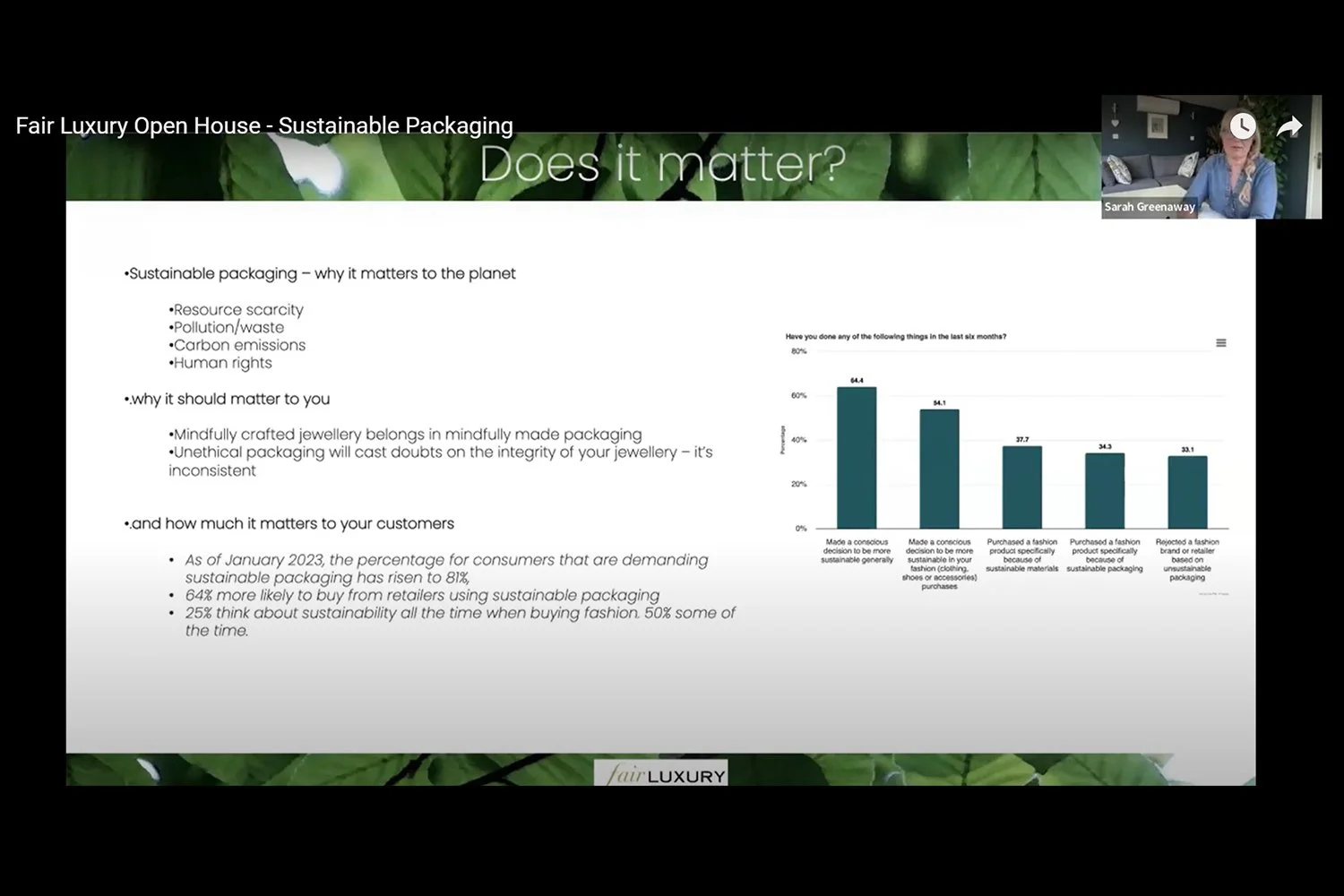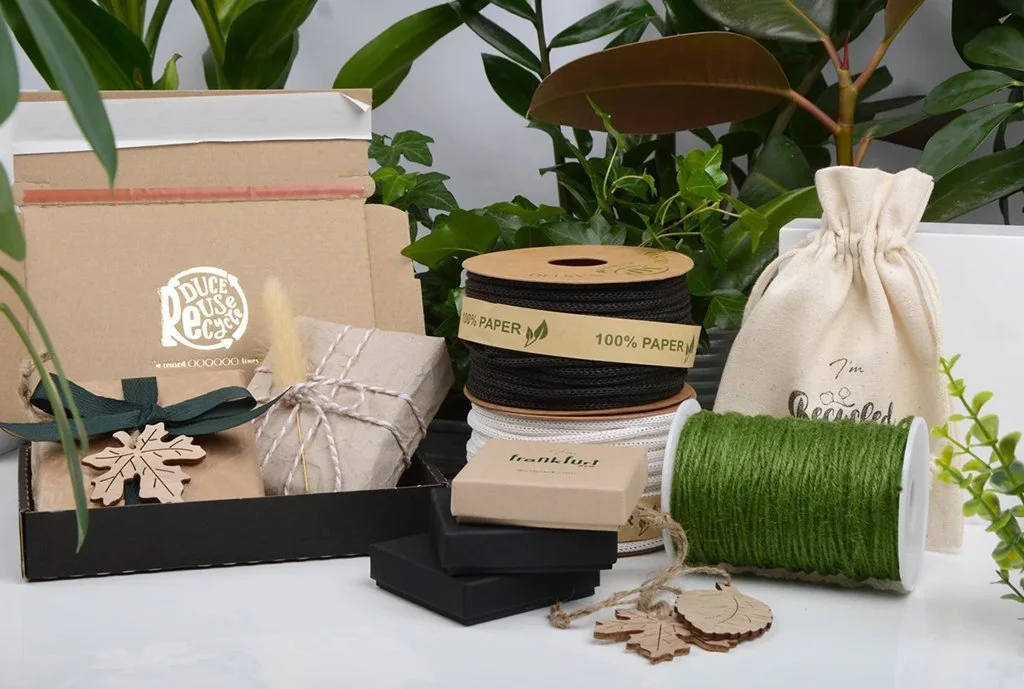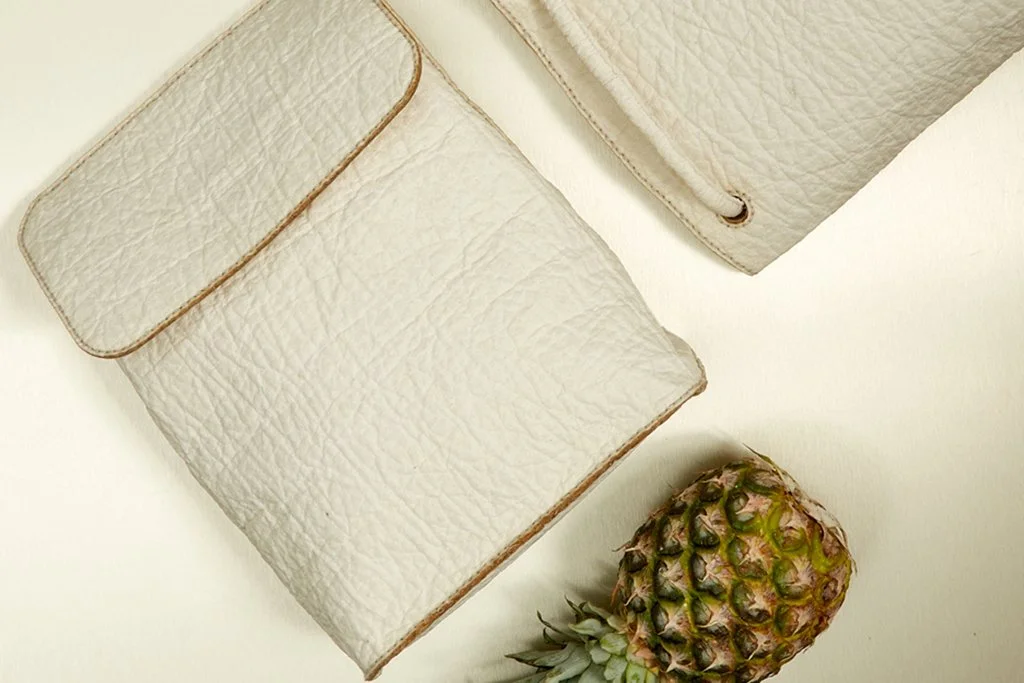Exploring sustainable jewellery packaging with industry experts
Our last Fair Luxury Open House was dedicated to a struggle that’s all too familiar for those in our community. How to source sustainable packaging for fine jewellery. Recyclable and eco-friendly jewellery packaging is often one of the first things a jeweller looks into to improve their ethical credentials. But how do you find ethical packaging for jewellery?
So, you’ve created a beautiful engagement ring, going out of your way to use certified gold and only the most responsibly sourced gemstones you can get your hands on. A thoughtfully designed and ethically sound piece of jewellery, it’s your baby and you’re incredibly proud of it. On receiving this once-in-a-lifetime piece of jewellery, your client will set eyes on the ring box before anything else. Naturally, it’s important to you that their unboxing moment is as magical as the ring itself – but not to the detriment of people or planet.
Our most recent Open House session investigated why it’s so hard - yet so vital - to find the right source for your high-end jewellery packaging, and explored the host of innovative materials appearing on the market. We heard from Alice Rochester (Senior Designer and Ethical Ambassador for Harriet Kelsall Bespoke Jewellery), Karen Johnson from Karen Johnson Design, Sarah Greenaway (business sustainability strategy consultant and Founder of sustainable packaging consultancy Root) and host and Fair Luxury team member Victoria Waugh (Founder, V&V Collective).
FRAMEWORK
“Looking for sustainable packaging is a bit like looking for a needle in a haystack,” Sarah Greenaway admits. “It can be a bit overwhelming.” That’s why she recommends underpinning the mission with a framework. To begin with, a sense of direction and motivation may be derived from taking a step back and identifying exactly why going the extra mile matters.
It matters to the planet
· resource scarcity (the limitations of trees, water, etc.)
· pollution and waste (plastic being the primary culprit)
· carbon emissions
· human rights (poor working conditions, unfair wages, etc.)
It matters to you
· mindfully crafted jewellery belongs in mindfully crafted packaging
· unethical packaging will cast doubts on the integrity of your jewellery; it’s inconsistent and may cause alarm bells to ring in the minds of consumers
It matters to your clients
· as of January 2023, the percentage of consumers demanding sustainable packaging has risen to 81%
· 64% of consumers are more likely to buy from retailers that use sustainable packaging
· 25% think about sustainability all the time when buying fashion
In bearing these principles in mind at all times, Sarah believes you will make informed and mindful decisions that are true to you. With this sense of integrity, you are equipped to talk openly and clearly with your clients about the decisions you’ve made. For inspiration, detergent brand True Earth have plastered their innovative packaging with insightful explanations of the choices they’ve made about its design.
Once in the right frame of mind, the rules are simple…
REIMAGINE: Don’t feel constricted. As a jeweller, your creativity and imagination is your strength. Think outside the box (if you’ll pardon the pun!) and draw inspiration from different sectors
REFUSE: Don’t feel bullied into a corner by plastic boxes and foam inserts. Accept that some things are simply a no-go and always will be – then remain determined to find a way around them
REPURPOSE: Allow yourself to be inspired by the materials around you; upcycle those old boxes, fabrics and lengths of string. Jewellery designer-maker and Fair Luxury team member Saskia Shutt, for example, creates jewellery presentation boxes from repurposed vegan cosmetic pots
REDUCE: Think critically about what’s really necessary. Is there anything your clients just don’t need?
RECYCLE: Explore materials that are recycled and/or recyclable. One audience member, for example, discussed utilising vintage and deadstock materials before purchasing energy-intensive new ones
REGENERATE: In an ideal world, the materials you use are regenerative. For example, if it’s timber, it should be sourced from a well-managed forest that exists for more than just trees. Think about how your packaging can make the world better generally, as opposed to just minimising its own damage
In the next section, we’ll speak in more specific terms about putting this framework into action.
TYPES OF PACKAGING: WHAT TO SEEK AND AVOID
Emma Aitchison’s mycelium packaging
Increasing consumer demand for sustainability is driving an evolution, with innovative new technologies and materials emerging at an exciting rate. The possibilities are abundant, and no singular route is right or wrong – but our insightful speakers highlighted some of their favourite options at this moment in time, along with some of the materials they believe should be avoided. Here are their recommendations…
PRESENTATION BOXES
Karen Johnson Design’s packaging, made from unlaminated recycled board, British wool inserts and ribbons made from recycled plastic bottles
For any jeweller, a great presentation box is a must-have. Not only does it keep your jewellery safe; it’s synonymous with your brand identity and makes a huge first impression.
What to look out for:
· Uncertified paper or cardboard
· Uncertified wood
· Plastic in any form
· Embossing with metal foils
· Foam inserts
What to aim for:
· Paper and board that’s of recycled origin or certified by the Forest Stewardship Council (FSC) or another similar organisation
· A re-imagination of the foam insert, using natural materials like wool, wool felt, recycled polyester, bamboo or cork to keep your jewellery cushioned and secure
· FSC certified wood from suppliers who are transparent and knowledgeable on their supply chains – like the bamboo used by Harriett Kelsall Jewellery or the English oak from sustainably managed woodland used by Philippa Louise Jewellery
Specific recommendations:
· Potters
· Elephant poo paper from the Little Green Paper Shop (paper made from recycled coffee cups or discarded textiles, cotton fibre, seed paper and even elephant poo!)
· Westpack
BAGS
What to look out for:
· Fabric type (avoid synthetic fabrics and ribbons)
· Manufacturing standards (factories in the Far East, for example, are rarely transparent and at high risk of human rights abuses
What to aim for:
· Organic fabrics, like organic cotton, that are responsibly dyed
· A re-imagination of the classic foam insert
· An open and thorough dialogue with your supplier about the origins of their materials. Don’t be afraid to ask why their products are described simply as ‘eco-friendly’!
Specific recommendations:
· If you’re ordering in small quantities, a small-scale producer who can manufacture your bags to order. Etsy is a good place to start!
· Birdsong is a community project wherein products are created by expert makers facing barriers to employment in the UK, with a focus on refugee and migrant women in Tower Hamlets, London
· Alternatively, you could even brand your bags yourself, by bringing together off-the-shelf touches that make them unique to your brand. Think DIY logo printing, paper binds and cotton ribbons
· Newlife ribbon from Beresford's, which is made from recycled plastic bottles
MAILING PACKAGING
What to look out for:
· Plastic (e.g. bubble wrap filling)
· Tape
What to aim for:
· Paper and board that’s of recycled origin or certified by the Forest Stewardship Council (FSC) or another similar organisation
· Recyclable solutions
· Closures and stuffing made from natural materials, like natural wool
Specific recommendations:
· Most Jiffy envelopes are filled with plastic; be wary of that
· Japanese washi tape
· Westpack
· No Issue
POUCHES
Pinatex pouches from Ananas Anam
What to look out for:
· Plastic
· Animal leather
What to aim for:
· Recycled, organic and/or fair-traded fabrics
Specific recommendations:
· Organic, Fairtrade cotton
· Pinatex (pineapple leather)
· Fish leather, considered more sustainable than traditional animal leather due to its byproduct nature
· Work + Shelter, a cut and sew business in India empowering women in need by encouraging them into work
CHALLENGES
Philippa Louise Jewellery’s wooden boxes with natural wool inserts
Though it’s inspiring to learn of all the innovative ways our fellow industry members are protecting their creations and constructing their brand identities, our speakers were candid; the journey towards sustainable packaging is rarely straightforward. With so many Fair Luxury Pledgers choosing to focus their Pledge on their approach to packaging this year, we recognise just how complex this fiddly process can be.
Of course, there is the question of long-term lifespan; we may work hard in the early stages to ensure that the packaging we present aligns as closely as possible with our ethical and sustainable margins, but it’s also our responsibility to consider our how our customers might handle that packaging once it no longer belongs to us. Biodegradable plastics, paper and cardboard are only a sustainable option when they land in the appropriate waste streams to allow for proper decomposition. Likewise, it’s important to verify whether a ‘recyclable’ or ‘compostable’ material is truly recyclable or compostable in household settings. As the distributors, it’s on us to educate ourselves on the materials we’re using, then educate our customers. Small instruction print-outs are a great means of relaying information. Alternatively, Karen explains, those who have the budget to invest in luxurious packaging may find that their customers are more likely to hang onto it as a keepsake, or reuse it for alternative purposes.
Then, there’s practicality. Fundamentally, jewellery packaging needs to protect its contents. This means the materials used must be resilient enough to stand up against the trials and tribulations of handling and transportation. It’s also really important to consider the possibility for chemical reactions. Some felt box inserts, for example, have been known to tarnish jewellery.
Our speakers were also united by their tricky experiences with suppliers, with poor communication raised as a common gripe. Greenwashing is rife, and this can make it really difficult to distinguish those going the distance for people and planet, from those whose claims simply aren’t backed up by responsible practise. Sarah stressed the importance of dialogue; of not being afraid to ask “But how is it eco-friendly?” and push for answers until satisfied. This habit of demanding transparency and holding suppliers accountable is one we must all try to foster in our day-to-day lives, but it’s fair to say that it’s not conducive to a quick fix.
IT’S WORTH OUR WHILE
Harriett Kelsall’s FSC bamboo jewellery box
All challenges considered, the outlook is positive. The endeavour to create packaging which encapsulates our brand identities whilst aligning with our personal values is not without bumps in the road, but that’s life. The fact of the matter is, our customers choose to invest their money in our brands because they love to support endeavours that do good for people and planet. Carefully considered packaging makes them happy, which makes the juice worth the squeeze. The landscape is constantly evolving, and the options available to us are exciting. In holding our foot to this pedal – in keeping our ears to the ground, remaining curious, educated and vigilant - our increasing collective demand will be the force that drives industry change.
A huge thank you to everyone responsible for making this Open House such a valuable session; to our insightful speakers generous enough to share their knowledge with us, the Fair Luxury team members who worked so hard to coordinate the event, and, of course, the attendants who make sessions like these worthwhile. For information on upcoming Open Houses, subscribe to our mailing list or keep an eye on our events page.








